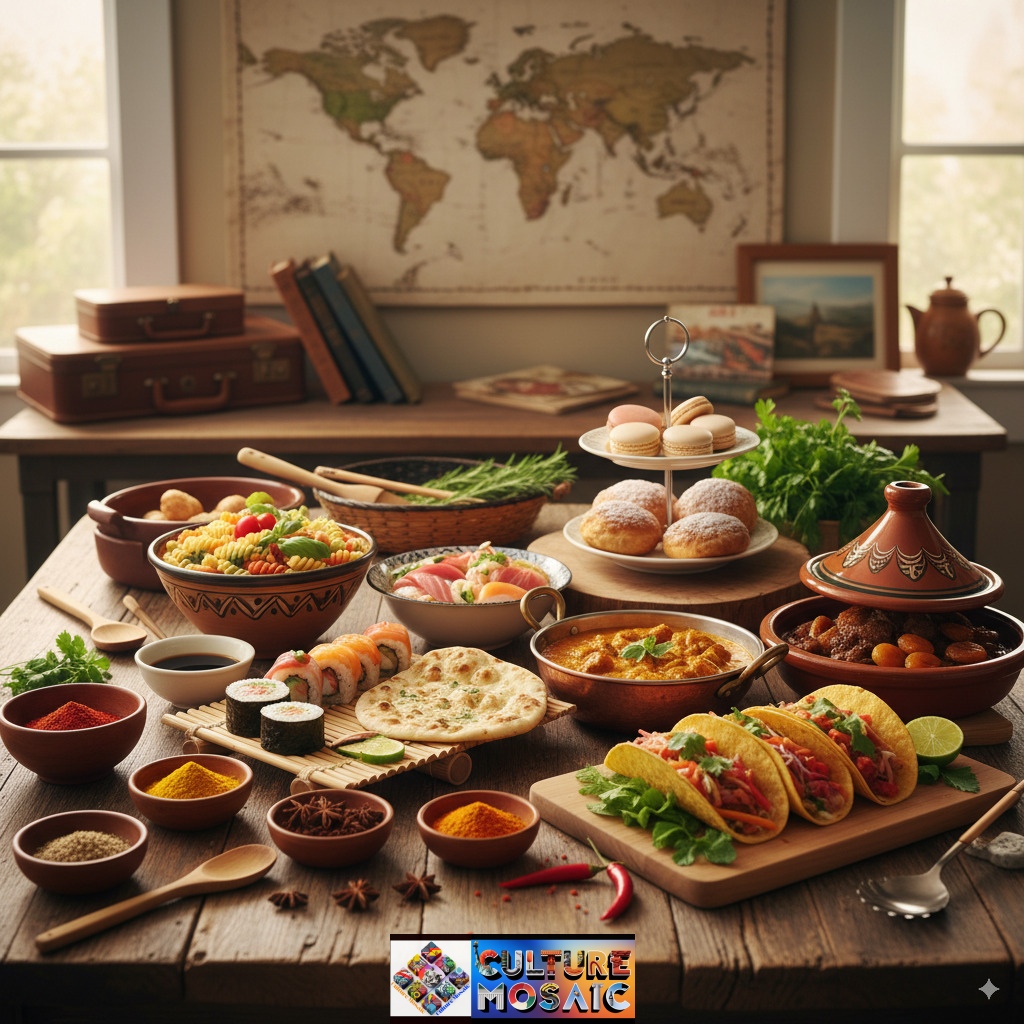Authentic Global Recipes: Ever wondered what a dish really makes authentic? I have to take you to a delicious adventure task through kitchen around the world, where every recipe tells a story.
Does a recipe make really authentic?
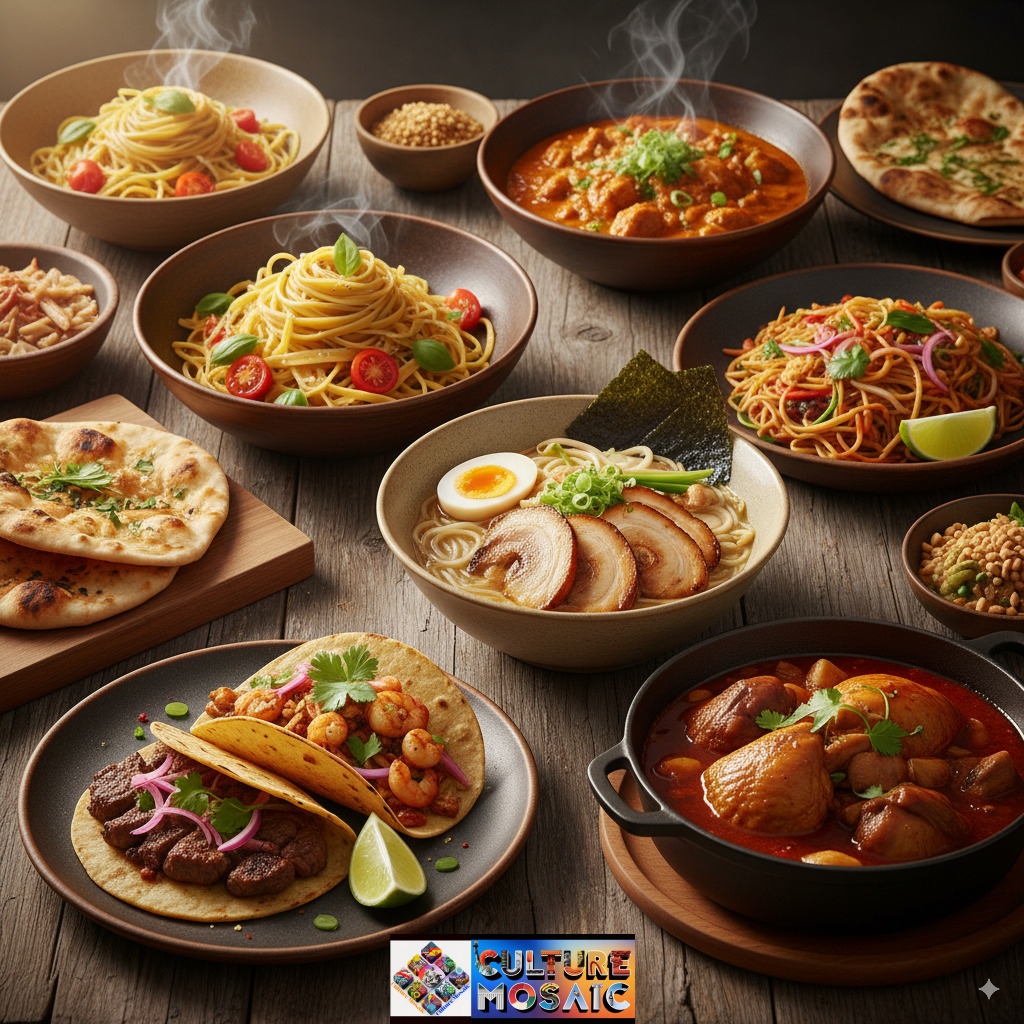
This picture: You are passing through a stirring market in Bangkok, and an elderly seller entrusts you a steaming bowl of Pad Thai. Flavors hit differently that you will find in your local Thai restaurant, right? This is authenticity in action.
Authentic recipes are not only about materials – they are about history, tradition and hands that have passed them through generations. Think of them as food time capsules, move the essence of culture from one kitchen to another.
Spirit behind traditional cooking
When my Italian friend‘s Nanna taught me to make a raga, he did not use the measuring cup. Instead, she will say “Tomato as long as it looks like sunset” or “bustling with a saint’s patience”. This is the magic of authentic cooking – it is spontaneous, individual and deep in experience.
Regional variations: Why your curry taste is different in Mumbai vs. London

Here is something attractive: even within the same country, the dishes change dramatically depending on geography, climate and local ingredients. This is such that how your personality depends on whom you are with.
Effect of climate on taste.
- Hot Climates: Think India, Thailand, Mexico – They prefer spicy foods because it really cools you.
- Cold region: Nordic Country, Eastern Europe – They bends to warm, warming dishes with root vegetables.
- Coastal Region: Mediterranean, Caribbean – Fresh Seafood and Light Preparation dominate
Local material shapes everything

Take something simple as bread. In France, you get the perfect crusty bagules for their soft things. In India, you get soft naan and chapatis who work beautifully to scoop the curry. The same basic concept, what increases nearby and how people eat, completely different performance at the basis of how people eat.
Essential Ingredients That Define Global Cuisines
Each consonant consists of its signature players – the elements that immediately take you to a specific place. Let me break some game-screenwriters:
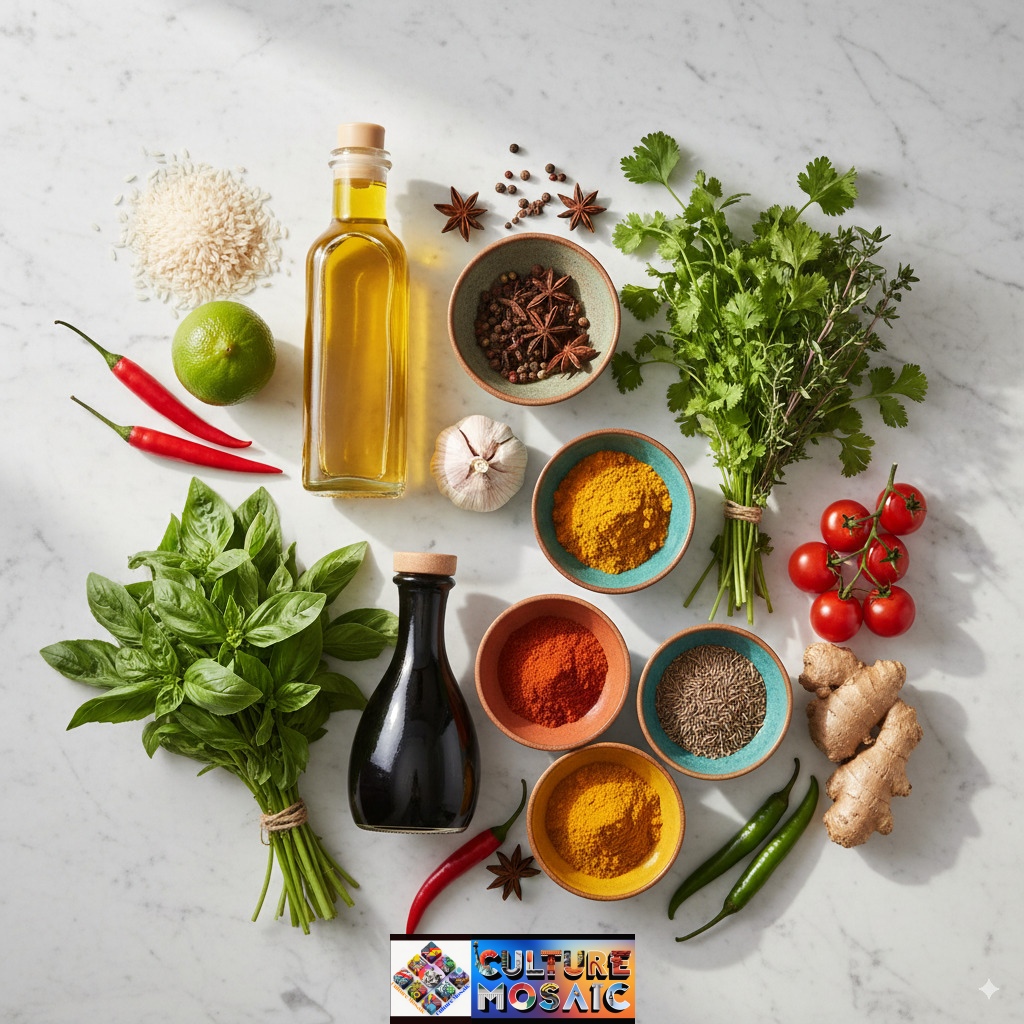
Mediterranean Magic Maker
- Olive oil: liquid gold that makes everything taste like a holiday
- Fresh herbs: Tulsi, parsley, thyme – they are like a plant like sunlight
- Tomato: Sweet, acidic perfection that brightens everything
Asian Taste Powerhouse
- Soy Sauce: Umami in a bottle – literally adds everything depth.
- Ginger and Garlic: A Dynamic couple that appears in almost every Asian dish.
- Rice Vinegar: The subtle tang that awakens your taste buds.
Latina bring American heat
- Chilli: From mild pobonos to fiery haberos – they add complexity, not only heat.
- Lime: Bright acid that makes everything pops.
- Cilantro: You either love it or think it is a taste like soap – no middle ground!
Authentic Global Recipes: Traditional Cooking Techniques That Change Everything
Technology is the place where real magic occurs. This is not just what you cook, but how do you cook it that makes all differences.

Slow cooking art
Ever note how your grandmother’s stew is always better? This is because she understood the power of time. Authentic global dishes often trust:
- Low and slow brazing: Think French Coke AU Win or Morocco Tagin
- Patience with fermentation: Korean Kimchi, German Soccer Truit, Indian Dosa
- Layers of taste: Start with aromatics, adding materials in the right order
Heat management secret
Various dishes have mastered various heat techniques:
- High-Heat Stere-Fieing: Chinese Woque Hei-That Smokey Flavor that you can only get by burning hot metal
- Gentle Simmring: Italian resotto requires constant attention and gradual liquid addition
- Cooking made of wood: Nothing beats the taste of pizza with a proper wooden oven
10 Try authentic recipes from all over the world
Ready for cooking? Here are some dishes that will give you the real taste of your home countries:
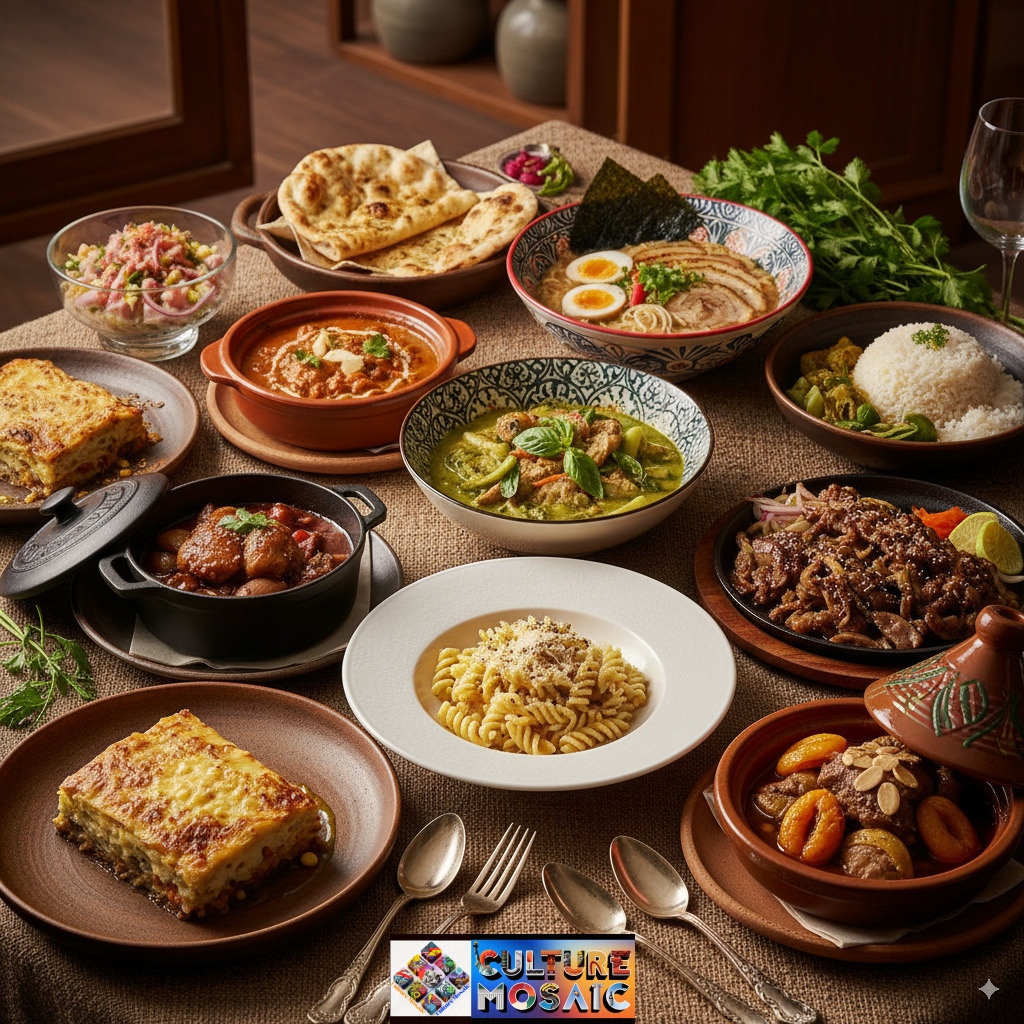
1. Italian Cassio E Pepe (Rome)
The ultimate proof that simple can be spectacular
Just pasta, cheese, black pepper and pasta water. Looks basic? try it. Roman have been completing it for centuries, and one of the reasons is that it is still a comfortable meal to leave.
2. Japanese Ramon (Different Area)
Not the college dorm kind – the real deal
Authentic Ramon is an art form. It may take 24 hours to make broth alone. Tokyo’s clear Shoyu, Saporo’s Rich Miso, and Kyushu’s Creamy Tonkotsu.
3. Mexican Mol Pobano (Publa)
The sauce with more ingredients than your spice rack
Some versions use more than 20 materials including chocolate. It is complex, time taking, and perfectly worth the appearance of the prep.
4. Indian Butter Chicken (Punjab)
Creamy, dreamy, and surprisingly easy
Despite its rich taste, authentic butter chicken is quite acceptable for home cooks. Mystery? Before cooking, kill chicken in curd and spices.
5. French Coke and Win (Burgundy)
Chicken braised in wine – fancy but doable
This farmer dish -made classic proves that the best dishes often come from making simple ingredients.
6. Thai Green Curry (Central Thailand)
Fresh, spicy, and aromatic
The key is making its own curry paste with scratches. Yes, it is more work than buying a jar, but the taste difference is incredible.
7. Morocco Chicken Tagin (North Africa)
One-pot wonder with exotic flavors
Sweet and charming combinations, such as chicken with apricots and almonds showed North African cooking in their best.
8. Greek Mousa (Greece)
Layered comfort food at its best
Think of it as a response to Greece for Lassgna with brinjal, meat sauce and creamy selling.
9. Korean Bulgogi (Korea)
Sweet, savory marinated beef
Marines define the palate here: soy sauce, pear, garlic, and sesame oil unite to create pure magic.
10. Peru Kevise (Peru)
Fresh fish “cooked” in citrus
Simple ingredients, accurate techniques. Lemon juice actually “cook” the fish through acid, not heat.
Modern twist on classic cuisine: innovation completes tradition

Things are interesting here. Today’s chefs are looking for ways to respect the tradition while working for modern life.
Smart replacement that works:
- Using Greek yogurt instead of heavy cream: Calorie cuts without sacrificing creamy
- Spiralized vegetables: noodle stand-ins that are glass-free and great for low-carb pasta.
- Air Fire Adaptation: Get that crispy texture without deep frying
Fusion Done Right
Good fusion respects both parents’ dishes. Think of the Korean Tacos or Ramon Burger – they work because they understand the main elements of each dish and combine them thinking.
Authentic Global Recipes: Tips for Cooking Authentic Global Recipes at Home
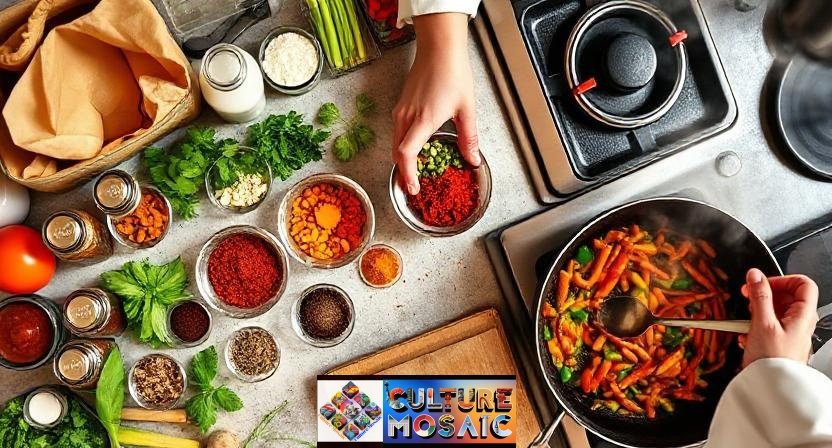
Want to nail these dishes in your own kitchen? Here’s what I’ve learned from years of trial and (lots of) error:
Start with Quality Ingredients
- Buy spices in small quantities: They lose potency quickly once ground
- Invest in good salt: Sea salt or kosher salt makes a real difference
- Find ethnic grocery stores: They’re goldmines for authentic ingredients at great prices
Master Your Mise en Place
Everything must be in its place: gather and prepare all your ingredients before you start cooking. Trust me on this one. When you’re making stir-fry and need to add five different things in 30 seconds, you’ll thank me.
Taste as You Go
This may be obvious, but it’s remarkable how often people overlook it. Your palate is your best tool. Season gradually, taste constantly, adjust accordingly.
Don’t Skip Steps
When a recipe says to toast spices or bloom aromatics, there’s a reason. These steps build flavor layers you can’t achieve any other way.
Embrace Mistakes
Every chef has burned garlic or over-salted soup. Learn from it, laugh about it, order pizza, and try again tomorrow.
Authentic Global Recipes: Where to Source Authentic Ingredients

The Internet has made authentic ingredients so easy, but here are some tried sources:
Local option
- Asian Grocery Shops: Sauce, Noodles, and Amazing for Production
- Middle Eastern Market: Great for Spices, Grains and Special items
- Mexican groceries: fresh chili, masa, and authentic cheese varieties online resources
- Special Food Sites: Perfect for Hard-to-Found Items
Online Resources
- Specialty food sites: Perfect for hard-to-find items
- Direct from producers: Many artisanal producers sell online now
- Subscription boxes: Some focus specifically on authentic global ingredients
Cultural Importance: Food as Identity and Heritage

Food is more than fuel—it’s an expression of identity. Each dish bears stories, memories and cultural DNAs that connect us to our roots and each other.
Food as time travel
When I make my grandmother’s piogi recipe, I am not just making dumplings. I am connecting with his Polish village, his struggle as an immigrant, and his determination to keep traditions alive in a new country.
Share stories through food
Each culture uses food to mark important moments. Mexican Day of dead altars includes favorite foods of deceased loved ones. Center around Indian festivals specific sweets and cuisine. Jewish Sabbath dinner follows thousands of years old traditions.
Authentic Global Recipes: Seasonal Cooking Around the Globe

Honoring the weather for authentic cooking and what is fresh and available. It is not just about taste – it is about stability and relationship for the natural world.
Spring ceremony
- Japanese Sakura season: delicate cherry blossom-flavored treats
- Mediterranean Herb: Fresh Tulsi, Mint, and Parsley in everything
- Indian mango season: sweet, ripe mangoes both sweet and charming dishes
Summer abundance
- Italian tomato season: peak time for fresh pasta sauce and salad
- Greek island cooking: light, fresh dishes perfect for hot weather
- American BBQ season: Regional styles from Canasus City to Carolina
Fall Harvests
- German oktoberfest: Heartiest Sausage and Warming Spices
- Indian Post-Monoon: Weather cools as rich, warming curry
- Mexican Day of the Dead: Special Bread and Traditional Prasad
Winter comfort
- French Holiday Cooking: Rich Brees and Celebration feasts
- Scandinavian Hij: Cozi, Warming Recipes For Long Dark Winter
- Chinese Hot Pot: Communal Cooking that brings families together
FAQs About Authentic Global Recipes
Q1: How can I tell whether a global recipe is authentic or just fusion?
Look for cuisine from iconic sources – Food blog by cookbook writers, indigenous cooks or cultural institutions of that culture. Authentic dishes usually have stories behind them and use traditional components combinations. If you see “Butter Chicken Pizza” or “Sushi Burito”, you are definitely in the fusion area (which is not bad, just different!).
Q2: What should I do if I cannot find a specific authentic component?
First, try ethnic grocery stores or online sources. If you still cannot find it, do research on proper replacement instead of just winging it. Food blogs of that culture often suggest options. For example, if you cannot find fresh curry leaves for Indian cooking, you can leave them instead of replacing them with something that completely replaces the taste profile.
Q3: Is expensive material always necessary for authentic cooking?
No way! Many authentic dishes were born of poverty and making the simplest material. Italian Casio E Pepe uses only pasta, cheese and black pepper. Mexican Street Tacos shines with good corn tortylus and simple filling. Pay attention to technology and freshness on expensive materials.
Q4: How do I customize authentic recipes for dietary restrictions?
Start understanding the main tastes and techniques of the dish, then find suitable replacement. Many cultures already have vegetarian or light versions of popular recipes. Indian cuisine offers countless vegetarian options, Mediterranean food can easily be made dairy-free, and Asian cuisine often uses naturally using gluten-free materials such as rice.
Q5: What is the best way to learn authentic cooking techniques?
Experience on hands beats every time you read. Take cooking classes, watch video tutorials from native cooks, or better yet, cook with someone from that culture. YouTube channels by cooks in different countries often show more authentic techniques than celebrity chef versions. Before going to complex recipes – do not be afraid to start the master’s basic techniques.

